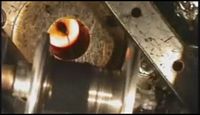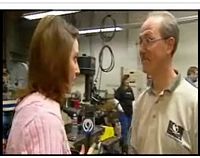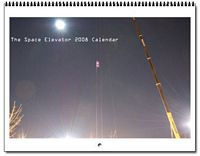 Yes the Games are over and yes I’m sure that 99% of the readers here already know the results. But I did a search on the various articles written in a “wrap-up mode” and am posting some of them here. All of them (IMHO) contain some info I didn’t know or were , in other ways interesting…
Yes the Games are over and yes I’m sure that 99% of the readers here already know the results. But I did a search on the various articles written in a “wrap-up mode” and am posting some of them here. All of them (IMHO) contain some info I didn’t know or were , in other ways interesting…
This article is from the Punkworks blog and talked about getting ready for the competition and the accident which occurred on route to the games (talked about in more detail here and here).
This article is also from the Punkworks blog and is most unhappy in its tone. They state definitively that they are “…definitely not coming back to Spaceward’s games ever again.” This is unfortunate, but they really weren’t ready to go, also mentioned in this same posting; “We were basically integrating on the launch platform.” It’ s hard to win when you do that… Punkworks had teamed up with the McGill Team to try and make a go of it.
The Davis County Clipper (a local publication) had at least two articles about the Games (here and here). The second article contained a bit of information I hadn’t known until reading this; “The weather played a significant part in the dismal results. “They were considering packing up and moving to Ames Air Force Base in California,” said Curtis Koch of the Davis County Events Center. Instead, they agreed to stay when the fee for using the event center was dropped, acknowledging that the expected 20,000 anticipated attendance did not materialize. The final rental amount for the event center space was $5,300.” I’ll have to ask Ben if this is true 🙂
One more local article from the Deseret Morning News.
Ben Shelef from Spaceward was interviewed on Planetary Radio from the Planetary Society prior to the Games.
One of the Journalist/Bloggers I met this year was David Shiga from New Scientist. He was a very pleasant guy, was easy to work with, and had several postings about the Games, here, here, here. and here.
Wired Science has their take here.
CNETNews.com had a couple of articles, here and here.
One of several local (Canadian) articles lamenting how USST fell just short of winning the prize…












 Brian Turner, captain of the Kansas City Space Pirates, sent me
Brian Turner, captain of the Kansas City Space Pirates, sent me 

 I have four more videos and two more pictures to post to complete my coverage of the 2007 Light Racers Competition.
I have four more videos and two more pictures to post to complete my coverage of the 2007 Light Racers Competition.











 As most of my readers know, Ken Davidian is NASA’s program manager for the
As most of my readers know, Ken Davidian is NASA’s program manager for the 
 Brian Turner and the Kansas City Space Pirates today issued this Press Release:
Brian Turner and the Kansas City Space Pirates today issued this Press Release: I’m happy to report that the
I’m happy to report that the 




 As you all know, there were a total of eight teams which competed in this year’s Climber /Power-Beaming competition. Two other teams, however, almost made it and they brought their climbers to display to the crowds and to the other competitors.
As you all know, there were a total of eight teams which competed in this year’s Climber /Power-Beaming competition. Two other teams, however, almost made it and they brought their climbers to display to the crowds and to the other competitors.
